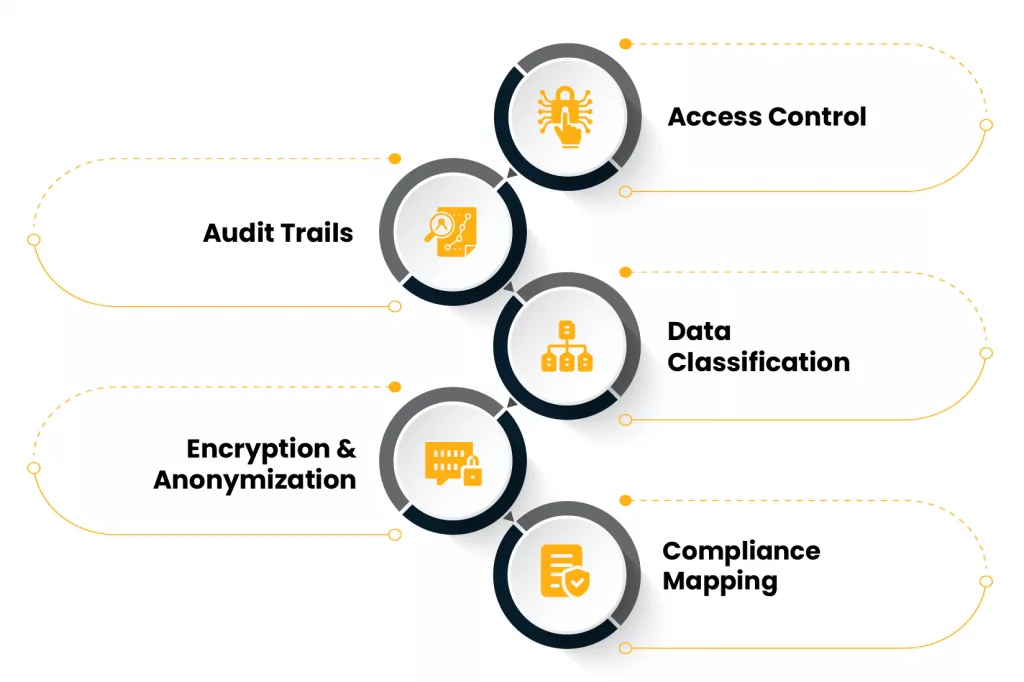How can businesses expect accurate insights from artificial intelligence when their raw data is a disorganized mess?
This question is more than rhetorical! It’s a reality check. Today’s AI tools, from advanced analytics platforms to predictive engines, are often seen as magic bullets. But even the most sophisticated algorithms can’t produce anything valuable from fragmented, inconsistent, or outdated data. Without a structured foundation, companies are effectively asking AI to guess.
So before chasing the next innovation, the real question organizations should be asking is: What is data management, and why is it essential for building any future-ready business?
Why Data Remains an Unsolved Problem for Many Businesses?
Despite digital advancements, most enterprises still grapple with the basics of managing their data. According to a 2023 report by Gartner, poor data quality costs organizations an average of $12.9 million annually due to operational inefficiencies and missed opportunities [source].
What causes this?
- Siloed systems that never speak to each other
- Redundant data scattered across multiple departments
- No clarity on data ownership
- Inconsistent rules on how data is handled, stored, or shared
This fragmentation has led to a growing demand for enterprise data management services—not as a nice-to-have but as a necessity. Without this foundation, compliance risks increase, decision-making becomes reactive, and AI tools become unreliable.
Is Your Business Sitting on Useful Data—But Can’t Use It?
Here’s another painful reality: companies collect more data than ever, but most of it goes unused. A recent study by Seagate and IDC found that only 32% of data available to enterprises is actually put to work.
This is where data management consulting services often step in—to help organizations shift from simply storing data to actively making it usable, compliant, and secure.
So, What Is Data Management—Really?
In formal terms, what is data management refers to the process of collecting, storing, organizing, and maintaining data to ensure it is accurate, secure, and accessible for business use. But that definition barely scratches the surface.
Done right, it includes:
- Defining clear data policies and governance models
- Implementing scalable infrastructure for storage and access
- Assigning accountability across teams
- Ensuring regular audits and quality checks
- Maintaining lineage to track how data changes over time
But more importantly, it’s about discipline—turning chaos into consistency.
How Do You Turn Data into an Asset?
This is where many businesses struggle. They treat data as a byproduct of operations instead of an input into strategy. So, how do you change that?
Start with structure. Here’s a simplified breakdown of the foundational steps:
1. Inventory Your Data Assets
Before improving anything, you need to know what you have. Catalog all sources—internal systems, third-party tools, and user-generated inputs.
2. Define Ownership and Accountability
Who is responsible for each dataset? IT teams alone can’t handle this. Involving business users ensures context is captured and applied.
3. Establish a Data Governance Framework
This includes naming conventions, update rules, access protocols, and quality checks. The goal is to avoid inconsistencies at the point of entry.
4. Integrate Disparate Sources
Use enterprise data management solutions to bring data together in a central model that respects both structure and scalability.
5. Monitor and Optimize
Data isn’t static. Set up real-time monitoring to ensure quality and relevance, with feedback loops to correct issues as they arise.
How Can You Ensure Compliant, Secure, and Governed Data?

The importance of compliance and data governance isn’t just about ticking regulatory boxes, it’s about trust. Customers won’t forgive data mishandling, and neither will regulators.
Key pillars to consider:
Access Control
Only authorized users should be able to view or modify data. Role-based access is the gold standard here.
Audit Trails
Keep a log of who accessed or changed what and when. This is critical for both internal transparency and external audits.
Data Classification
Not all data is created equal. Segment data into tiers (e.g., public, sensitive, restricted) and apply controls accordingly.
Encryption & Anonymization
Data should be unreadable in transit and at rest. Where necessary, anonymize personally identifiable information (PII) to limit exposure.
Compliance Mapping
From GDPR to HIPAA to CCPA—different rules apply to different industries and geographies. Use tools or partner with data management consulting services that can help map your data practices to legal requirements.
Why Do So Many Data Projects Still Fail?
A 2022 Harvard Business Review article noted that up to 85% of big data projects fail to meet their objectives. Why?
Because tools alone don’t solve root problems. These projects often skip foundational questions:
- Is the data accurate and complete?
- Are we solving a business problem or chasing a trend?
- Do we have the right people to manage and govern the process?
Investing in technology without process alignment is like buying a gym membership and never showing up. Success requires a clear plan, organizational alignment, and often, external expertise. That’s why more firms now lean on data management consulting services to build sustainable roadmaps, not one-off fixes.
What’s the Role of AI in All of This?
Let’s go back to where we started: the role of AI.
AI, machine learning, and analytics depend on context. Without clean, labeled, and reliable data, even the best AI models fall short. Bias creeps in. Outputs are misleading. Business value vanishes.
So, is your data even ready for AI?
That’s the critical question executives need to ask before any AI deployment. And the answer usually depends on how seriously an organization has taken what is data management as a strategic initiative—not just an IT function.
Treat Data as Infrastructure
Think of data like plumbing. You don’t see it, but it powers everything. When maintained well, it supports healthy systems. When ignored, it creates leaks, contamination, and breakdowns.
Every modern organization wants to be “data driven.” But the ones that succeed are those who build the pipes first.
Whether it’s through enterprise data management solutions or through tailored data management consulting services, the road to better decisions, fewer risks, and real business insights always begins with one thing: getting your data in order.











